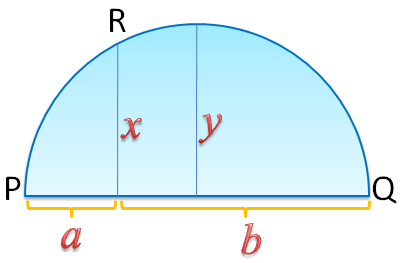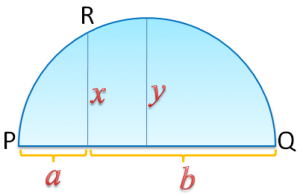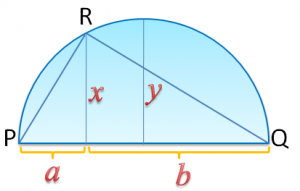A Simple Proof of the Arithmetic Mean Geometric Mean Inequality

Last February, we have used area to prove the Arithmetic Mean – Geometric Mean Inequality (AM-GM Inequality). In this post, we show a simpler proof.
Recall that the AM-GM Inequality states that given two numbers, their geometric mean is always less than or equal to their arithmetic mean. That is given two numbers and
,
.
Proof
Consider the semicircle above with radius . If we construct any vertical segment
from
to a point on the semicircle, we are sure that its length is less than or equal to the length of radius. That is, we are sure that the following inequality always holds
.
The diameter of the circle is equal to , so its radius
.
If we draw and
, we form two right triangles that are similar, the triangle containing the sides
,
, and
, and the triangle containing the sides
,
, and
. In effect, since the two triangles are similar,
which means that and
.
Now, since ,
and that proves the claim above.

